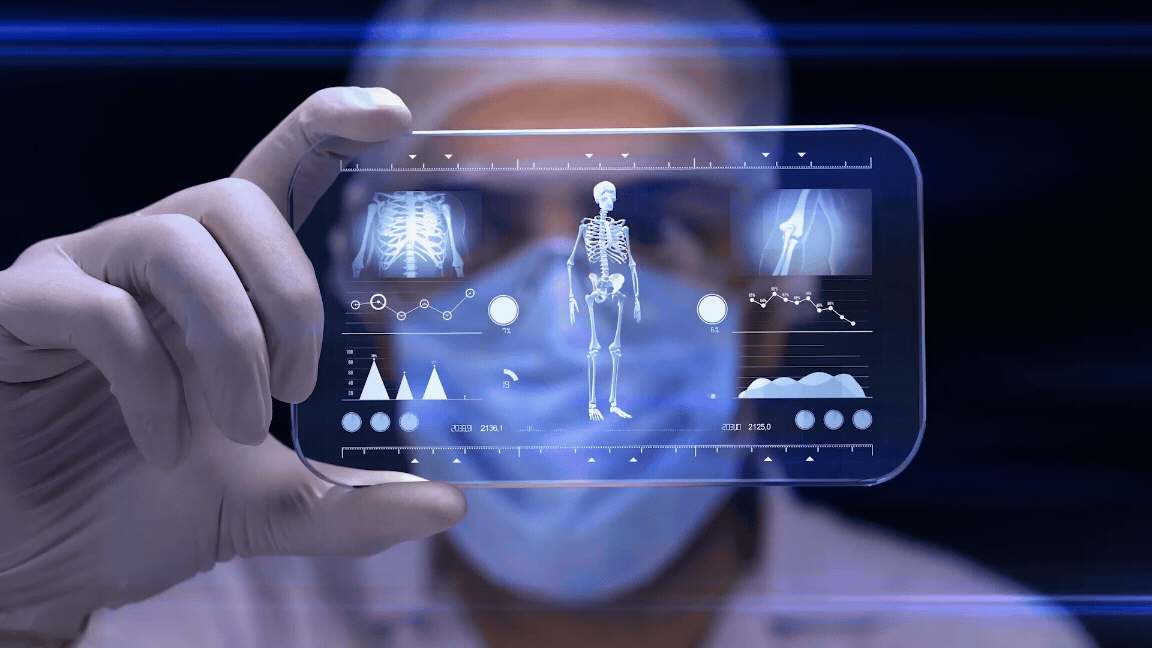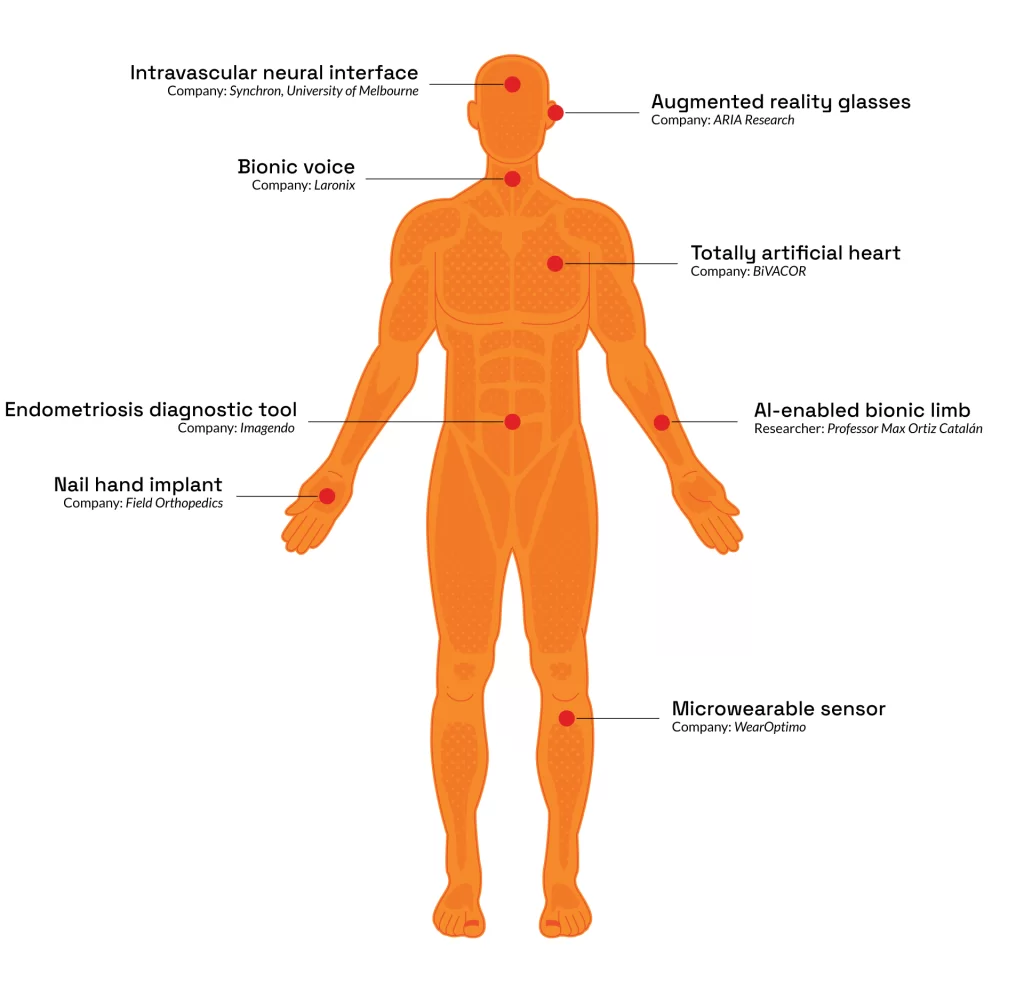
From AI-enabled bionic limbs to the world’s first total artificial heart, here are eight homegrown innovations set to improve lives in years to come.
Story by Joe Ennis, Lachlan Haycock and Joseph Harding
From the pacemaker to the cochlear implant, Australia has a long and distinguished history in building the world’s biomedical capabilities. The future is looking just as promising, with Australian engineers and companies embracing and exploiting rapidly advancing technologies to create AI-enabled bionic limbs, giving a voice to the voiceless with voice-cloning technology, and even developing the world’s first total artificial heart.
Below, create explores eight homegrown inventions set to improve the lives of Australians in the coming years.


Using magnetic levitation technology, the BiVACOR artificial heart is small enough for a child’s chest yet robust enough to pump life into an active adult. It has just been successfully implanted in a patient for the first time.
“If there’s an organ that’s failing, there’s an engineer trying to make one to replace it,” says Daniel Timms, the engineer behind the innovation.
“The natural heart can have a heart attack at any time, whereas this artificial heart will just keep spinning. When people have this device implanted, they aren’t going to die from heart failure.”

Using a combination of surgical reconstruction, a novel neuromusculoskeletal interface, and AI algorithms to decode motor commands, this innovation allows a patient to have intuitive movement of each finger of their bionic hand.
The mind behind this breakthrough is Professor Max Ortiz Catalán, Head of Neural Prosthetics Research at the Bionics Institute in Melbourne.
“We enhanced the nerve and muscle connections that would normally be found in the arm by taking the patient’s peripheral nerves that were severed by the amputation, splitting them, and then reconnecting them to a different muscle target in which we also placed implanted electrodes,” he explained.
“I took a device that was purely mechanical and incorporated electronic elements to make it interface with the nervous system, so the users could gain control over their prostheses.”


The novel NX Nail design does away with the need for plates, using a specialty titanium alloy that has extremely good biocompatibility and stiffness that more closely resembles bone compared to other implant material used.
“The NX Nail is specifically designed from CT data to suit the anatomy of the hand and has a compaction taper which achieves implant stability through an interference fit with the softer spongy bone,” said Michael Maurer, Vice President of Technology at Field Orthopedics.
“We’re utilising a specialty titanium alloy that has extremely good biocompatibility and … stiffness that more closely resembles that of bone compared to other implant material that’s used.
“[With] the NX Nail, [we] simply make a small incision, reduce the fracture, drive a wire across, use a cannulated drill over the wire, and then the NX Nail goes over the top of the wire.
“[We] screw it into the bone and then take the wire so the wound is one stitch. We have not disturbed the fracture healing or the soft tissue.”

By inserting a device called a stentrode into the superior sagittal sinus, the Stentrode can collect brain signals that can be decoded by a brain-computer interface giving back a quality of life to those who have lost motor control.
“It’s enabled typing, online banking, shopping,” said Professor David Grayden FIEAust. “Maybe in the future, there’ll be the possibility of controlling robotics like a robotic arm, possibly a wheelchair.
“For high-fidelity brain recordings, there’s an enormous advantage of going inside the skull. But there is this risk of having to cut somebody’s skull open and put the electrodes in, whereas this promised a way to get those electrodes in without having to open the skull at all.”


Laronix’s Bionic Voice is a smart device that combines non-invasive hardware and artificially intelligent voice-cloning technology – the same as used for deep fakes. It aims to offer hope to people who have exhausted other options.
“The only thing that you need to convey an exceptionally high-quality voice for humans is respiration; you don’t need any commands from the brain.” said Laronix CEO Farzaneh Ahmadi.
One patient who was overjoyed to try the Bionic Voice is laryngeal cancer survivor Bobbi. Using the device, she said she could “be part of society again”.
“Socialisation would be easily possible; parties and meetings and groups would be accessible. My mood would lift enormously … I could put the device on and order coffee verbally, I could go to the butcher and ask for items, I could tell my daughter she looks lovely today, I could yell at my grandson, I could train my dog, I could go to dinner with friends and participate in the conversation. I could [feel] normal again.”

Starting with hydration monitoring, technology from WearOptimo has applications across society including health care, sports and any occupation where people work in extreme conditions such as mining or firefighting.
“It’s the simplest version of the microwearable, as there’s no need for biological or chemical approaches to measure proteins circulating within the skin,” said founder and biomedical engineer Professor Mark Kendall.
“Instead, the hydration microwearable sensors use microelectrodes within the skin’s outer layer called the viable epidermis, which we’ve identified as the layer of the body that’s most sensitive to hydration.”


A lightweight computer that fits into a pair of glasses, Augmented Reality in Audio (ARIA) scans the environment and translates it into audio signals providing a visual analogue to the user.
“You can’t understand blindness by looking at it,” said founder Robert Yearsley. “Sighted assumptions about blindness are more often than not wrong; and this has led to sighted people consistently building the wrong solutions for the wrong reasons.”
“A third of our senior staff is blind, and more than ever, we are led by our blind colleagues and their deep insights into what needs to be built, how it needs to work for our end users, and which problems we need to solve for.”

An Australian study by Imagendo aims to use AI and machine learning to digitally combine the diagnostic capabilities of pelvic scans and magnetic resonance imaging (MRI) to identify endometriosis lesions eliminating the need for a diagnosis by surgery.
“We’ve be able to work with the Australian Institute of Machine Learning in a big collaboration where we can use lots and lots of scans, ultrasounds and MRIs and put all of the digital data together to add up the diagnostics to get much more accurate results for people, so they don’t have to have surgery as a first step.” said Principal investigator and head of Adelaide Endometriosis Group, Professor Louise Hull.
“If we can go in and say, ‘Here’s a really easy, non-invasive way that doesn’t cause any pain and doesn’t cause taking too much time off work or education’, it’s just going to make such a difference to the lives of women.”
Imagendo was awarded the 2023 ANSTO Eureka Prize for Innovative Use of Technology.
Enhance your understanding of current trends and practices at the Australian Biomedical Engineering Conference in November.

